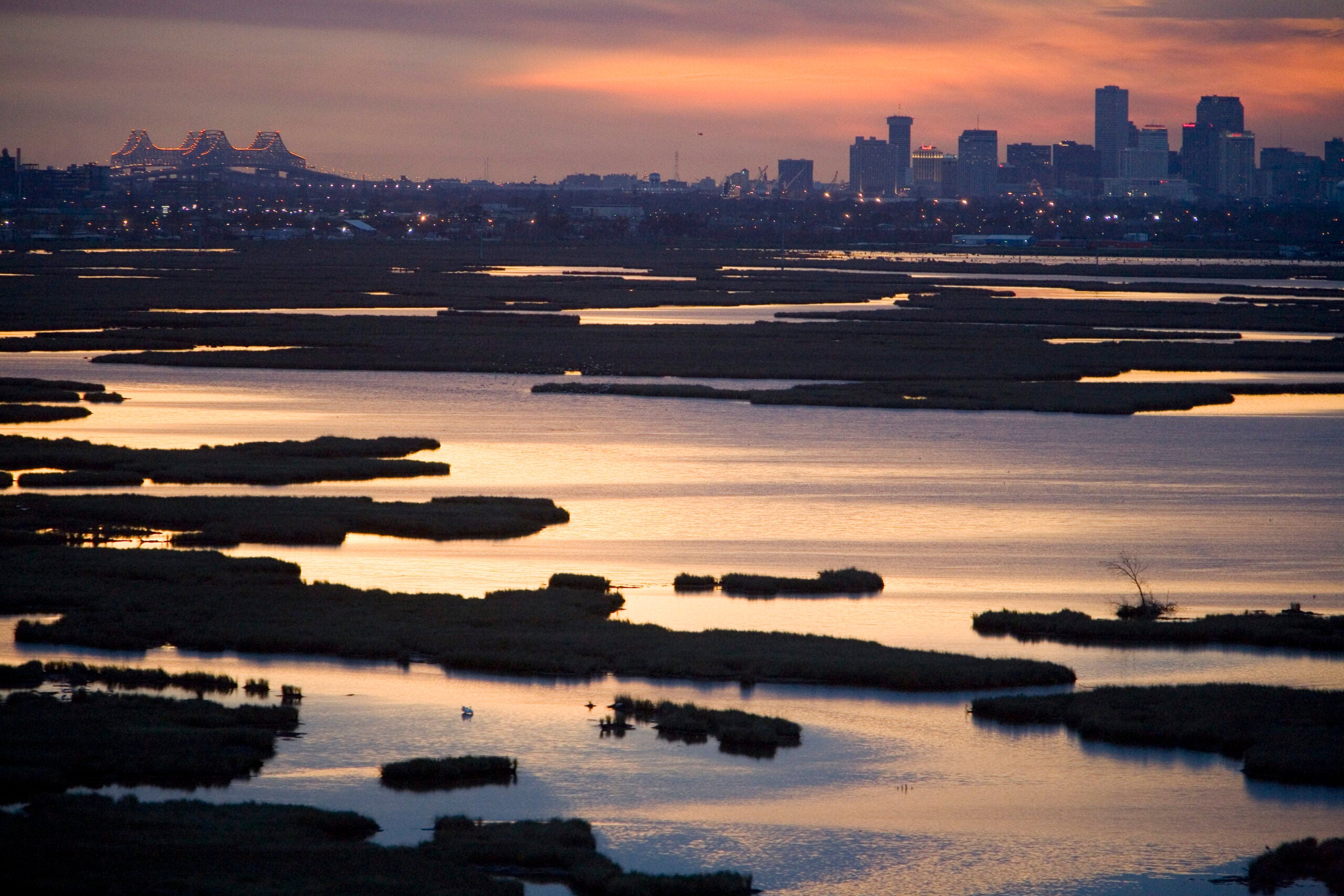By Makenna Cavanaugh, Federal Affairs Intern, Climate Resilient Coasts and Watersheds
Communities across the country are grappling with the whiplash of flooding and extreme storms as the frequency and severity of climate hazards reach unprecedented levels. From economic instability to safety hazards, to inequities and the destruction of entire neighborhoods, these events have proven to have devastating and lasting impacts. And one thing is made clear – we need real, robust solutions and we need them across all levels of government to protect communities and promote long-term sustainability.
Some states have acted by establishing a Chief Resilience Officer (CRO), a government position that is responsible for spearheading resilience coordination and bringing together stakeholders to build, develop and implement resilience strategies. Creating a state-level CRO helps leaders effectively plan at the state, county and municipal level and is a major step forward in protecting communities from future climate impacts.
Currently, 21 states have an established resiliency office or position at the state level. Among them, 11 states have a CRO.
Caption: States with a Chief Resilience Officer
A recent win builds resilience in Louisiana
On July 10, 2023, Louisiana Governor Edwards strengthened the state’s resilience efforts by signing H.B. 526 into law, which codifies the state’s CRO position permanently. This milestone comes three years after Edwards issued Executive Order 2020-19. This order established a CRO position in his office to advance the state’s coastal resiliency master plan. H.B. 526, led by Representative Jerome Zeringue, will benefit the state in the long run by creating a stronger and safer Louisiana, as the state has battled with destructive hurricanes, land loss from coastal erosion and increased flood risks from climate change. With strong passage through the Louisiana legislature, it signifies an acknowledgment of the necessity, importance and urgency of a permanent CRO position to lead resilience efforts in the state.
In 2019, Charles Sutcliffe stepped into the position and has since helped implement Louisiana’s Adaptive Governance Initiative to integrate climate resilience across state government. With the passage of H.B. 526, the CRO’s focus was expanded from the coastal zone to risks across the state, securing funding for more projects that address multiple hazards and impacts.
This legislation places the CRO permanently in the governor’s office to ensure durability, priority and longevity in resiliency planning. It also establishes an Interagency Resilience Coordination Team comprised of state agency resilience officers and a Louisiana Resilience Task Force, increasing capacity to elevate resilience issues and coordination. Furthermore, the law mandates annual reporting on these efforts to ensure transparency and accountability, serving as a compelling example of how legislation can facilitate climate resilience.
The greatest strengths of a Chief Resilience Officer
CROs exhibit two key strengths: their ability to effectively coordinate planning efforts centered around resilience and their dedication to build relationships that bring together various stakeholders and agencies. By coordinating across state agencies and educating stakeholders, CROs streamline planning efforts, promote best practices and support agencies with technical resources.
Recently, EDF had a chance to sit down with Sutcliffe and ask him about his experience as Louisiana’s coastal CRO. “What we have seen firsthand in Louisiana is that the adaptation challenges we face are just as large and just as comprehensive as our decarbonization challenges—but without as much attention. Our job as state leaders is to try to make adapting to climate impacts part of everything we do, whether it is building roads or building workforce training programs. It is the only way we can marshal enough resources to address the challenge at scale and in a holistic manner.” He highlighted how his role builds space for resiliency planning that balances both reactive and proactive approaches to address immediate climate disasters and prepare for future hazards and changing climate conditions.
In addition to creating and implementing state resilience plans, CROs advocate for resilient project funding, orchestrate community funding opportunities, build resilient infrastructure aimed at disaster preparedness and recovery and create climate databases. These actions help ensure communities have sustainable housing, strong local economies and effective regulations in place.
The importance of building capacity
Integrating resilience across state agencies is significant and requires a lot of resources. Sufficient education, policy toolkits, and federal resources are essential to equipping states with the science to mitigate and adapt to various climate risks. Oftentimes, inadequate staffing and resources can create a barrier for CROs and resilience teams. We’ve seen this in states like Maryland, New Mexico and Florida, which have faced vacancies in the CRO positions. There have also been limitations on staff dedicated to resiliency, experts engaged and public knowledge.
When asked about his one “magic wand” wish as CRO, Sutcliffe said he would love to expand education and knowledge about the importance of resilience. In order to integrate resilience, he explained, we first need communities and decision makers to recognize and understand it.
Widespread public exposure on resilience can increase capacity, initiate momentum and help enable a more effective, coordinated resilience response in states. “We are in this for the long haul and so educating the public is how we build the kind of momentum and commitment that we will need to make sure we are implementing the changes we need to see across political administrations and even across generations.” Furthermore, it equips the public with the knowledge needed to submit informed feedback, which helps leaders create more equitable strategies that align with community priorities.
Each state has different environmental risks, capacity challenges, and funding opportunities, which is why a CRO on the state-level is so important
As we anticipate worsening climate impacts, like more extreme flooding, storms and national disasters, having a leader solely dedicated to building resilience will prove essential in strengthening communities, safeguarding natural environments and ensuring a more sustainable future for all.










